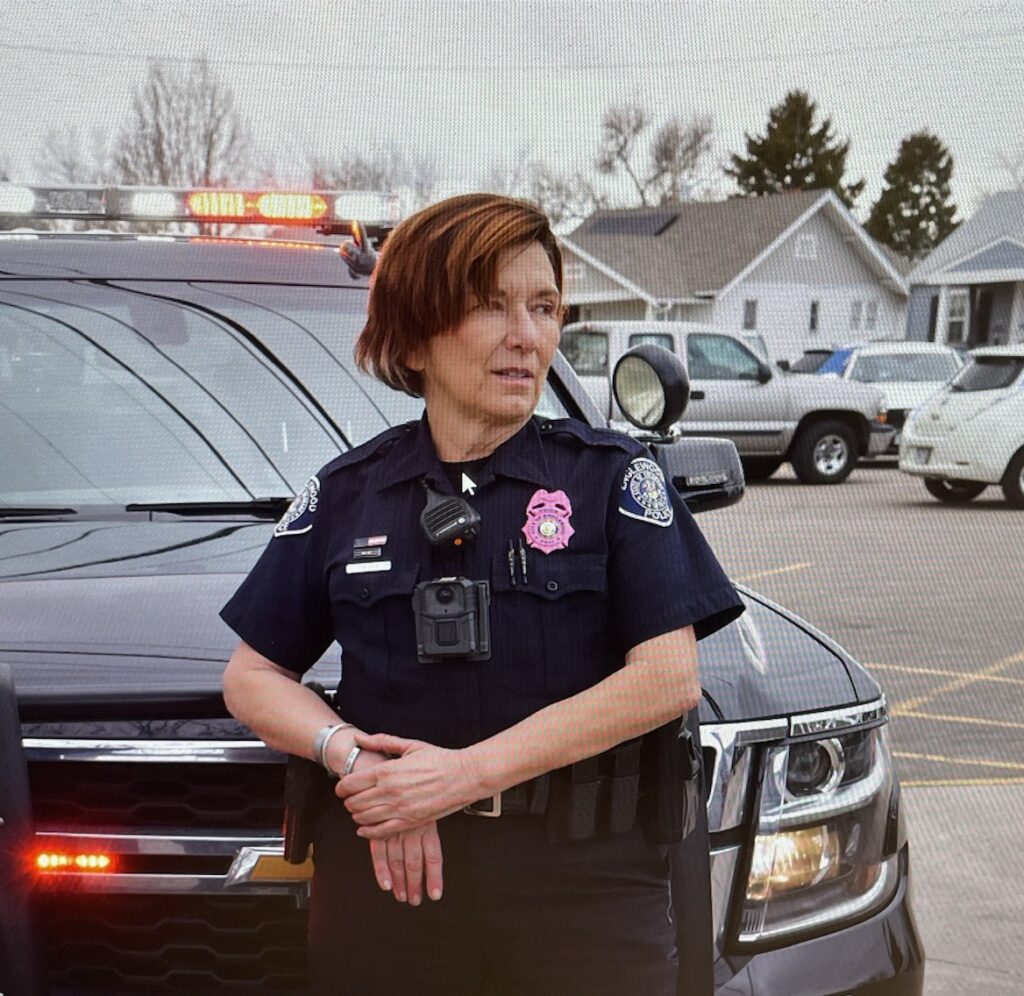Get a mammogram! Everyday is breast cancer awareness month! By the time 2022 comes to an end, more than 287,000 American women will learn they have breast cancer. According to the American Cancer Society, 43,000 of these women will die from the disease. It remains the second most common cancer among women, second only to skin cancer.
A few years ago, Englewood police officer Leticia Castillo was among the thousands of women to receive the diagnosis that every woman dreads. It caught her completely off guard because, as best she knew, there was no family history of breast cancer. There might be other things to watch out for, but breast cancer. Never.

“I was just mad,” remembered Castillo. She was also alone at home when she got the news. Her extended family all lives in California. She had no one to share the moment with her. The emotions suddenly pouring over her were not just from the diagnosis but also with herself, she said, despite having no real reason for the latter. “I was angry because I always took care of myself, stayed healthy, physically, emotionally and mentally.” She thought she had done her part.
But the reality is that while family history, genetics, often plays an oversized role in finding new victims, it is not the final indicator of who gets it nor who escapes it. Castillo just fell victim to the odds that continue to work against her in the same way they do with so many other women, especially women of color.
Indeed, the ACS says that the prime age range for the diagnosis encompasses women—and remains the leading cause of cancer deaths—between the ages of 20-59. Today, it says, 100 hundred women across the country will get the same news from their health care provider that Castillo got years ago in the phone call from her doctor.
Today the veteran cop can look back on those days not only with the confidence that she beat a killer at its own game but that she helped play a role in its defeat. She carries with her the memory—a jolt of emotion—that the anger that seemed to ooze from her every pore upon learning the news was key in the ordeal. She credits her state of mind along with the treatments for helping her deal with Stage 1 cancer diagnosis. “It was that very same anger,” she’s convinced, “that gave me the strength to get through the difficult journey ahead of me.” It was also reassuring to hear from her doctor that the cancer she had was not only the most treatable, but also the one with the highest success rates for a positive outcome.
Castillo knows that cancer did change her. “A cancer diagnosis,” she said, “is the beginning of a journey that never ends.” She knows that there is always a chance that it could return. But the possibility of that happening won’t rule her life. “I do not live in fear…I do not look over my shoulder waiting for recurrence.”
Still, as Castillo believes and as doctors recommend, mammograms and monthly self-breast exams remain important as a means of early detection against this killer. The ACS, said Dr. Archuleta, “recommends women who are at average risk to start getting annual mammograms sometime between age 40 and 44.” This is especially true for African American women who, while having lower rates of breast cancer than all other women, have a 41 percent higher mortality. Latinas, says the ACS, have a 1 in 10 risk of the diagnosis.
An interesting and strange breast cancer anomaly, said Archuleta, exists in Colorado’s San Luis Valley where breast cancer has occurred within the Latina population. Researchers have found that Latinas there “are at a higher risk for a mutation called the BRCA mutation.” BRCA are genes “that suppress malignant tumors (cancer) in humans.” People with BRCA “are at a higher risk of getting cancer.” The anomaly has been traced back centuries and is found primarily among Jewish people in Central or Eastern Europe. An article in Smithsonian entitled “The ‘Secret Jews’ of the San Luis Valley traces the serpentine journey of this gene.
While a breast cancer diagnosis is often life altering, doctors say if detected early, as was the case for Castillo, it is also treatable and curable. Survival rates, says the ACS, are now around 80 percent. Interestingly, while breast cancer rates, said the ACS, have risen .05 percent annually—largely due to early earlier diagnoses—breast cancer mortality has dropped. In fact, an ACS study showed that breast cancer deaths rates have fallen steadily since their highest point in 1989. The study showed a drop of 43 percent between 1989-2020 which translates into more than 460,000 stories of survival.
This year marks the 37th anniversary of Breast Cancer Awareness Month in the U.S. It is an annual reminder to encourage women to get regular mammograms but is also a marker for letting people know that the disease still requires better outcomes, more research and better funding. It is also a reminder, said Castillo, that women can also play a vital role in lowering an outcome that no one wants. “A mammogram saved my life.” The pink ribbon tattoo permanently affixed to her skin and the matching pink ribbon bumper sticker on her Jeep accompany her wherever she goes. They are reminders for anyone who sees them, that breast cancer can happen to anyone. Also, they’re reminders that breast cancer is not a death sentence.




